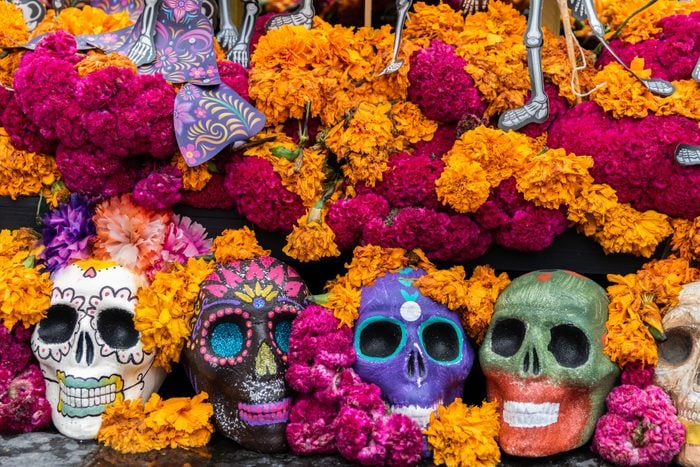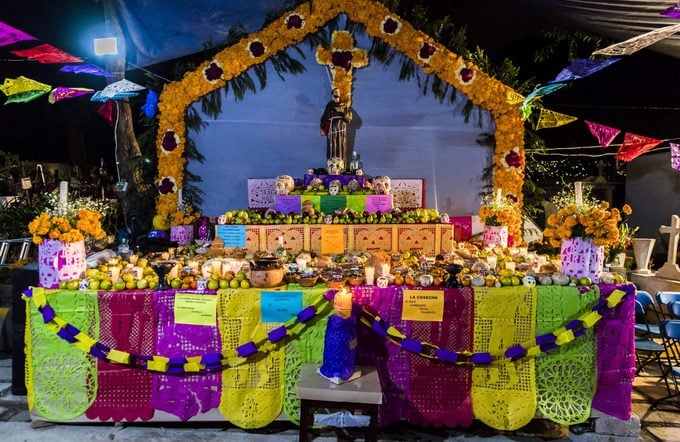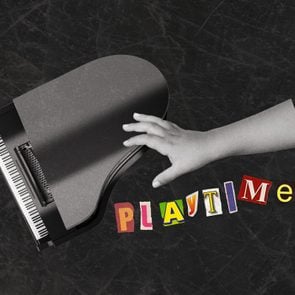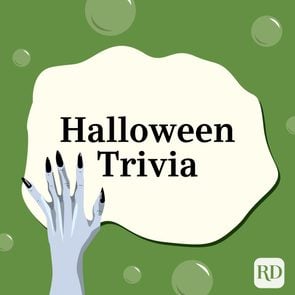When Is Day of the Dead? The History Behind Día de los Muertos
Updated: Nov. 25, 2022

Though it has only recently gained in popularity in the United States and across the world, Day of the Dead is a tradition that goes back thousands of years.
What is Day of the Dead?
Dia de los Muertos, or as it is known in English, Day of the Dead, is an increasingly popular holiday that takes place on November 1 and 2 and has sparked annual events and celebrations across the United States. You may even see some Day of the Dead-inspired Halloween decor, even though Day of the Dead and Halloween are on different days and arose from different cultures and traditions. Still, Dia de Los Muertos is often included in lists of Halloween traditions around the world.
On this day, the deceased are welcomed back into the world of the living by their friends and relatives who keep their memory alive. American audiences may have been introduced to the Dia de los Muertos celebration by the movie Coco, one of the best Disney Halloween movies for kids. The animated movie brings to life the central idea that the deceased are never truly gone until there is no one left to remember them.
In Mexican culture, the dead are received with brightly decorated altars or ofrendas that include candles, bowls of water, and many of the foods the deceased enjoyed during their lifetime. This is the one day of the year in which the divide between the worlds of the living and the dead is blurred. On this day throughout Latin America, the cemeteries will be filled with friends and family of the deceased who await the return of the spirits of their loved ones.
When is Day of the Dead?
Dia de los Muertos is celebrated on November 1 and 2. Originally, the Aztecs celebrated the holiday during the month of August. With the arrival of the Spanish colonizers in the 16th century, traditional indigenous holidays were merged with those related to Christianity. As Dia de los Muertos shares similarities with All Souls Day (more on that below), the Spanish shifted the holiday to the first day of November.
Day of the Dead history
If you’re still asking yourself, “what is day of the dead?” Dia de Los Muertos stems from the Meso-American indigenous tradition. Historically the holiday was a celebration of the return to the world of the living of the Aztec Goddess Mictecacihuatl. The Goddess along with her husband Mictlantecuhtli presided over the dead and the underworld. Mictecacihuatl was linked both to death and to resurrection. When the Spanish arrived in what is now Mexico they witnessed the month-long celebration in honor of the Goddess Mictecacihuatl taking place in what corresponds with our modern calendar of July and August.
What happens on Day of the Dead?

The popularity of the Dia de los Muertos tradition continues to grow. Latinxs and those with an interest in the culture have embraced the idea of constructing remembrance altars or ofrendas within their own homes. The altars are built of three levels which represent the underworld, the world of the living, and the afterlife. In Mexico City, the tradition has grown to include an annual parade that is attended by thousands. The viewers and the paraders alike are dressed in their vibrant representations of the Catrina and the Catrin with the colorful face paint of the Calavera or death itself. The indigenous people wore masks made of wood, skulls, and other materials during the celebration honoring the goddess Mictlantecuhtli. Today masks are no longer used by those observing the holiday. Instead, painting one’s face is used to honor and represent the beloved deceased. In other areas of Latin America where Dia de los Muertos is celebrated, many take a trip to the cemetery to visit the graves of loved ones. Instead of being a mournful time, the cemeteries are transformed into a festival-like scene where vendors sell traditional foods and decorations including paper flowers to decorate the graves.
The difference between Day of the Dead and All Souls Day
The Dia de los Muertos tradition and All Souls Day are both very old traditions, one stemming from indigenous rituals and the other from old Christian traditions. Meso-American cultures have celebrated Dia de los Muertos centuries before the arrival of the Spanish. Historians believe the tradition is more than 3,000 years old and its roots may stem from the ancient Toltec culture. Dia de Los Muertos is a joyful celebration where the dead and the living are reunited. All Souls Day, celebrated around the world, takes place on November 2 and has been commemorated since 998 AD. Established by Abot Odilo, of France, All Souls Day has become a Catholic tradition as the day to pray for the souls of the dead who are in purgatory.
Day of the Dead facts
- American audiences may associate Dia de los Muertos with Mexican culture, but Dia de los Muertos is celebrated in numerous countries in Latin America.
- Marigolds are known as flor de muertos or flowers of the dead and these bright orange flowers decorate the altares/ofrendas and the graves of the deceased loved ones.
- The parade in Mexico City began in 2016 and draws thousands of viewers and participants.
- The 2015 James Bond movie Spectre featured a fictitious Dia de los Muertos Parade in Mexico City, which later inspired the Mexican government to create an actual parade.
- La Catrina, the iconic caricature mocking the Mexican aristocracy was created around 1910 by Mexican artist Jose Guadalupe Posada. La Catrina has become a staple of a Dia de los Muertos celebration and is a reminder that in death the aristocracy and the poor are equal.
Sources:
- Smithsonian American Art Museum: “Traditions and Change: The Transformation of Día de los Muertos in the United States”
- The Conversation: “Day of the Dead: From Aztec goddess worship to modern Mexican celebration”



